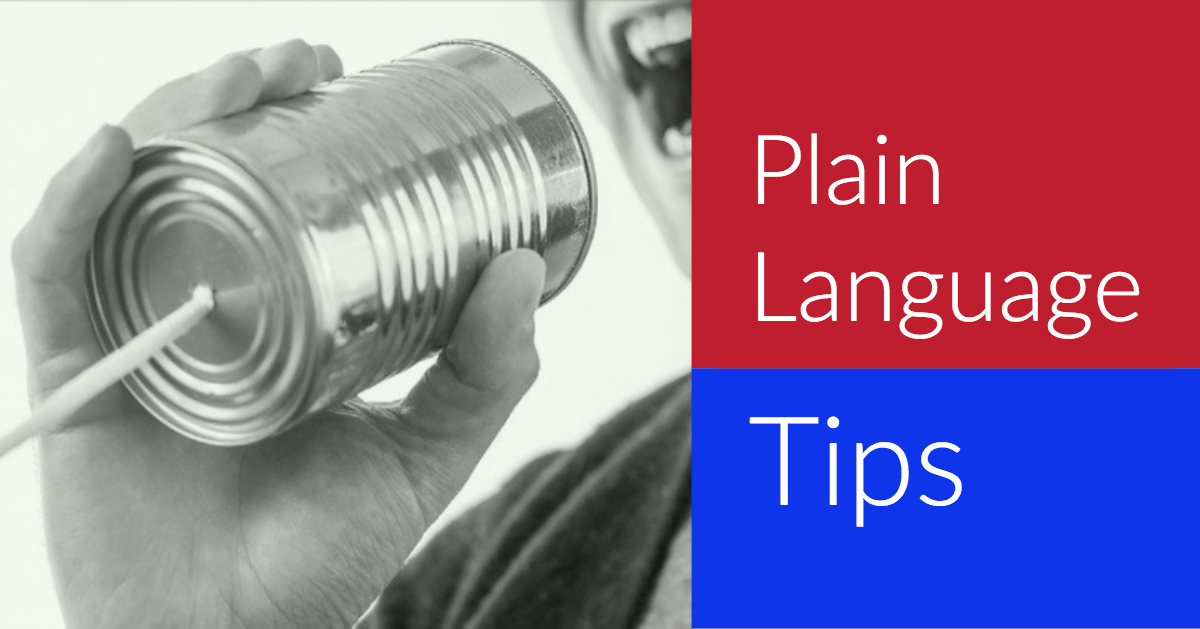To Deliver Your Message, Keep It Simple
Everyone wants to look smart. Unfortunately, looking smart and being complicated can get confused. This can lead to brochures or websites that use obscure words or complex sentences. That kind of content takes time and thought to read. No matter how smart the reader, when they want information on your product or service they do not want to dig through layers of unnecessary wordiness. They’re busy people and busy people, no matter how smart, prefer plain language. When you’re in a rush, plain language is easier to follow, understand and recall. When you write copy, choose plain-language if you actually want people to read your message.
Many messages are written at a grade 16 reading level while most people read at a Grade 8 level or lower. This means that many business messages get missed, ignored or misunderstood. Did you know that 42% of Canadian adults between the ages of 16 and 65 have low literacy skills? In fact, 55% of working-age adults in Canada are estimated to have less than adequate literacy skills. The Organization for Economic Cooperation and Development found that 50% of U.S. adults can’t read a book written at an eighth-grade level.
The design of your content also plays a big role in message delivery. You can write brilliantly and still lose your audience by using weak design elements. Examples of poor design include using a font that is hard to read or placing text against a high contrast or busy background. It can also mean not repeating key messages. The following tips and tactics on using plain language approaches will help deliver your message.
What are the benefits of plain language?
-
Gets your message across faster.
-
Reduces confusion since readers are more likely to understand and follow instructions.
-
Saves time and resources. Readers can understand the message the first time they read it.
Plain language writing elements include:
-
Short words, simple sentences and paragraphs.
-
Using familiar words and a conversational and personal tone.
-
The logical presentation of information (which of course isn’t always obvious). Consider putting the most important ideas first and link them from one paragraph to the next.
-
Use examples to illustrate ideas.
-
Use Illustrations, photos, diagrams or graphs to illustrate your message.
-
Use headings, bullets or bold type to highlight important information. In the online world where underlining a word often means there is a link, try to avoid underlining.
Quick Tips
Plan your document in advance:
-
Before starting, ask what is the purpose of the document.
-
Who is it for and what are their characteristics?
-
What do they need?
-
What are their expectations?
-
-
If the document is for your customer or client, consider things like age, gender, language, literacy, education, cultural traditions, math ability, familiarity with the topic, mental/emotional challenges.
-
Is there a follow-up action for the reader?
Writing and editing tips:
-
Use organized, clear sentences that are under 35 words.
-
Explain only one idea in each sentence.
-
Use titles and subtitles that are informative and summarize your points.
-
Don’t use unnecessary or non-essential information (cover only 3-5 points at most).
-
Use a formal table of contents for long documents or an introductory paragraph for shorter ones.
-
Use verbs instead of nouns for your action. For example, it’s better to say, “act” instead of “take action.”
-
Use the active voice where possible. Below are examples of active and passive sentences.
Tony sold three comics in one hour. (active)
Three comics were sold by Tony in one hour. (passive)
Ann gave great advice at the job fair. (active)
Great advice was given at the job fair by Ann. (passive)
-
Simplify your words; use everyday language.
-
Don’t use jargon and avoid acronyms or abbreviations.
-
Use technical words with care: define or provide descriptive examples.
-
Cut out unnecessary words.
-
Write instructions in the order you want them carried out.
-
Aim for a grade 4-6 reading level when writing for the general public (this document is Grade 8.2)
Design Tips
-
Use fonts that are easy to read (e.g. Times Roman, Courier)
-
Font size for print items should be 12 at a minimum.
-
Use white space.
-
Don’t fill all spaces with text or images.
-
The eyes need a chance to rest.
-
White space is also less intimidating to busy people. When there is more white space, reading looks like it will take less time than densely packed type.
-
-
Use ragged right margins (not justified).
Evaluate Your Document
-
Is it relevant to the reader?
-
Are the language and concepts clear?
-
Is it well organized?
-
Does it answer the readers’ questions?
-
Use spell check/readability stats function to test the document.
-
Ask for feedback from friends or colleagues.
Instead of |
Use |
accomplish |
do |
ascertain |
find out |
disseminate |
distribute |
endeavour |
try |
expedite |
hasten, speed up |
facilitate |
make easier |
formulate |
devise, form |
in lieu of |
instead of |
locality |
place |
optimum |
best, greatest |
strategize |
plan |
utilize |
use |
with regard to |
about |
by means of |
by |
in the event that |
if |
until such time |
until |
during such time |
while |
in respect of |
for |
in view of the fact |
because |
on the part of |
by |
subsequent to |
after |
under the provisions of |
under |
with view to |
to |
it would appear that |
apparently |
it is probable that |
probably |
notwithstanding the fact |
although |
adequate number of |
enough |
excessive number of |
too many |

